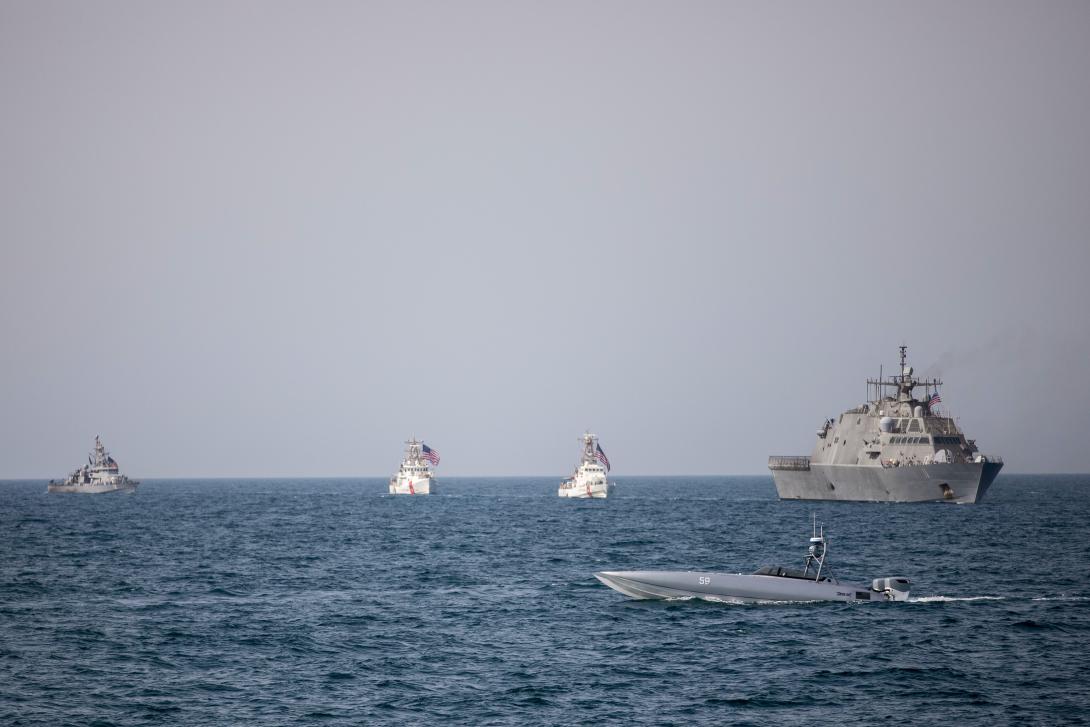President's Commentary: People Power Maritime Capabilities
Throughout history, maritime operations have proven critical to military success, national security and economic prosperity. No nation flourishes without access to the seas. That was true for the ancient Egyptians, Greeks, Persians and Vikings. It was true during the American Revolution, the War of 1812 and both world wars. And it will be true far into the future.
We live in a time of rapid and dramatic change, but the need for successful maritime operations remains constant. Our adversaries, China most notably, covet influence across the Pacific region to the Artic and Africa and aggressively modernize their militaries with long-range precision missiles and other cutting-edge capabilities—all of which raise serious concerns over control of global waterways.
In an attempt to change the current world order to its—and only its—advantage, China also extends its naval influence by deputizing commercial fishing vessels and building military facilities at ports from Western Europe to East Asia. Not content to abide by the 2016 ruling of the Permanent Court of Arbitration in The Hague, China also continues to assert maritime rights over nearly the entire South China Sea.
Current U.S. maritime strategy emphasizes that the domain is integral to security and prosperity for America and all nations and calls for cooperation among the Navy, Marines and Coast Guard.
“We are at an inflection point. Our integrated Navy, Marine Corps and Coast Guard must maintain clear-eyed resolve to compete with, deter, and, if necessary, defeat our adversaries while we accelerate development of a modernized, integrated all-domain naval force for the future. Our actions in this decade will shape the maritime balance of power for the rest of this century,” the strategy states.
The United States will generate a balanced, hybrid fleet that includes undersea, surface, air power, aircraft carriers and expeditionary land forces. Manned-unmanned teaming will increase fleet capacity and expand the ability to distribute forces. Unmanned systems will help provide intelligence, surveillance and reconnaissance data, while the networks, battle management aids and data infrastructure provide an actionable operational picture.
Historically, naval innovations included the magnetic compass, steam engines, nuclear propulsion and aircraft carriers. Now, we prepare for a future in which unmanned systems, artificial intelligence, hypersonic weapons, cyber operations and laser weapons may determine who rules the seas. And with a nuclear fusion breakthrough announced in December, we may see a whole new propulsion system for ships and submarines in the far future.
Just this past December, Navy officials announced that, as part of the Digital Horizon exercise, they paired unmanned systems with mesh networking capabilities. During the exercise, the U.S. 5th Fleet’s Task Force 59 achieved a first when it launched an Aerovel Flexrotor unmanned aerial vehicle from a Coast Guard Cutter. The Navy ultimately plans for medium, large and ultra-large unmanned surface vessels to counter China’s maritime modernization efforts.
Joint all-domain command and control (JADC2) will be the tie that binds together these myriad technologies. JADC2 will connect sensors from every military service into a single network, use artificial intelligence to analyze the data and then recommend the best weapon system, whether kinetic or nonkinetic.
Our allies are modernizing their maritime capabilities as well. NATO has shown interest in unmanned aircraft, ships and submarines to counter Russian aggression in the Arctic. Meanwhile, Singapore, South Korea and Japan are turning to unmanned ships to search for underwater ordnance and monitor human trafficking, illegal fishing and other security threats.
However, no technology undermines the value of our men and women in uniform. Regardless of the technical advances, human courage and ingenuity will determine who ultimately dominates the maritime domain. Dedicated, professional personnel in the United States and partner and allied forces will always be our key differentiator.
Our people, not our machines, provide the innovative solutions, make the vital decisions and determine the outcome. Some ships may be unmanned, but our future will not be.





Comments